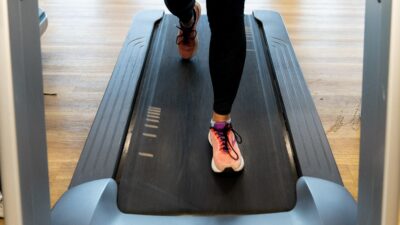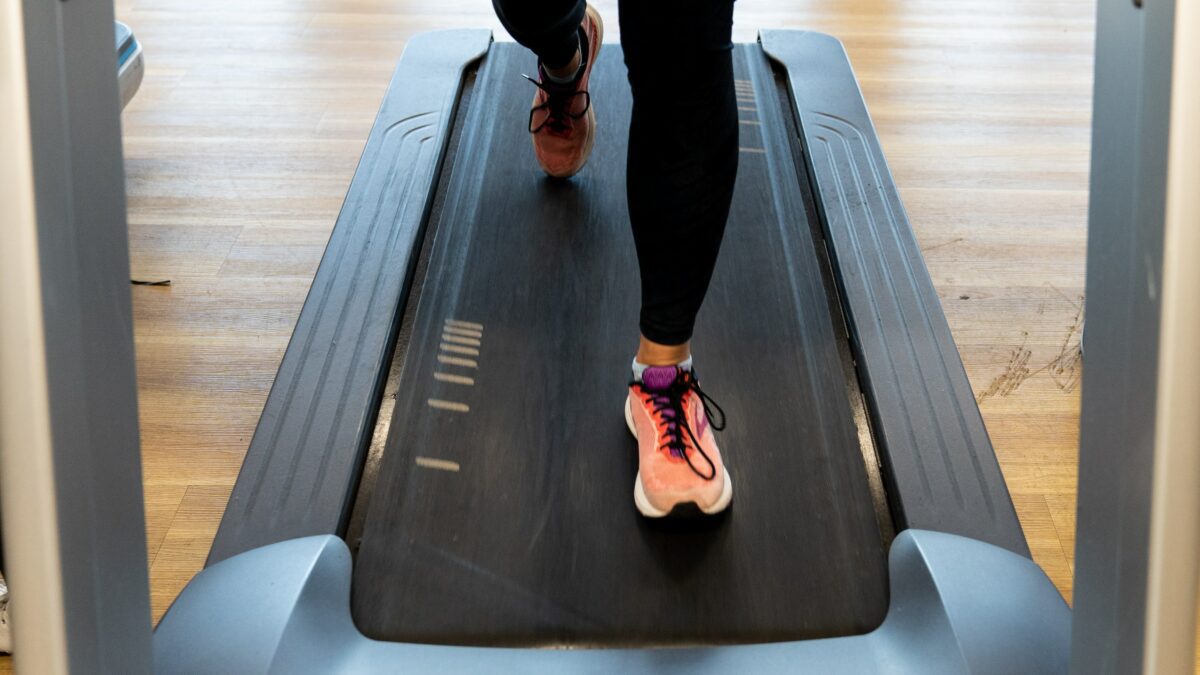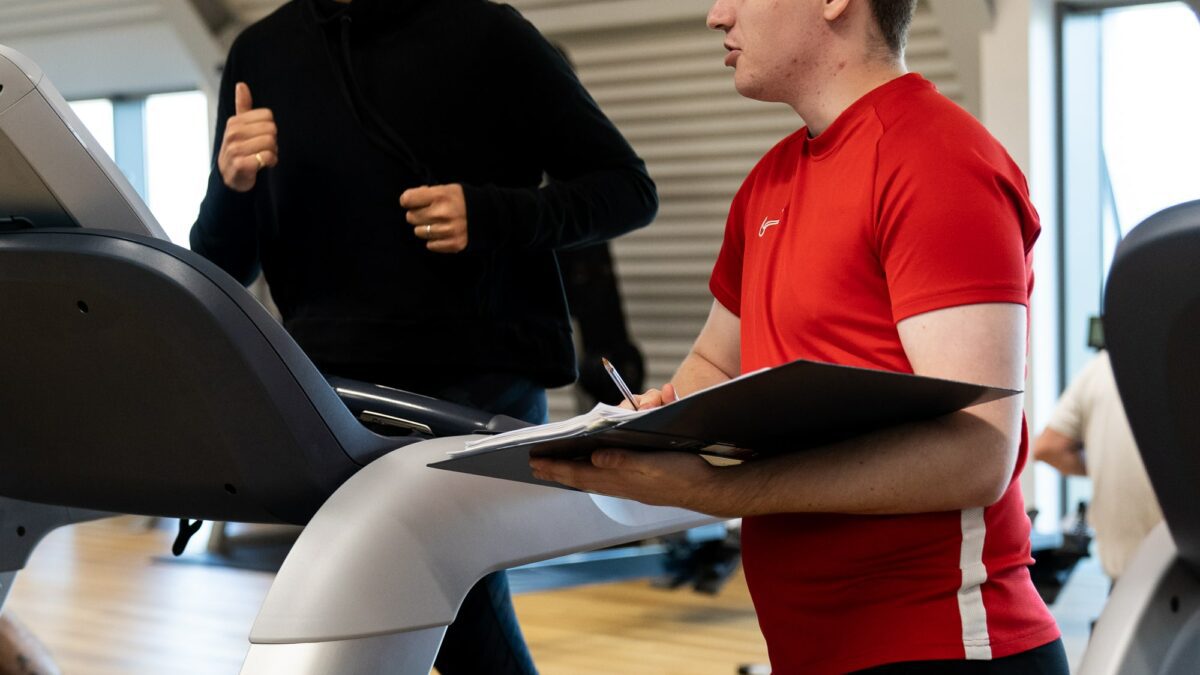



Many runners tend to set themselves goals to either improve their speed or increase their distance.
In this article, guest author Human Kinetics shares some tips from their expert authors on how you can run faster.
Authors of The Happy Runner, David and Megan Roche explain how to develop the speed skill and explain how to train to run faster in their book. Below is a short excerpt.
Three guidelines can guide your journey to speed. As always, the big disclaimer applies—these are generalized rules, and what works for you could be way different.
On each flat stride, ease into the effort, with the first five or so seconds just building up speed, then settle into the fastest pace you can go comfortably. Think about effortless form, avoiding swinging your arms like a sprinter. You’re a kid playing tag at recess, not an adult running from the cops.
Read more in The Happy Runner.
Running faster obviously requires physical training to ensure your technique and fitness are up to scratch. However, being able to run faster also requires a lot of psychological strength to ensure you have the mental strength to continue pushing through when training gets tough.
Some tips on how to develop such psychological strength, excerpted from Personal Best Running include:
– Goal setting – When you hit that ultimate point of despair in a race—“Why am I doing this?!”—good goals reground you. Thinking about why you set your sights on this race and what doing well in it will mean to you should get you back on track.
So, part of a good goal is that it’s personally meaningful to you. It should be something that fires you up when you think about it. Feeling like you “should” do something, like run a marathon because people keep asking you when you’re going to, isn’t what we’re after here. It has to be meaningful to you.
– Visualisation – Studies have shown that when you visualize something like a race, your body partially responds as if you’re actually doing it—your heart rate and blood pressure increase, for example. Your brain gets wired to run the race how you’ve visualized it. Come race day, some of the mental work is already done. You’ve already made some of the decisions about how you’ll run
Read more in Personal Best Running.
Of course, no runner goes out of their way to get injured, however, making sure you have a smart training program in place can help to avoid injury as much as possible. The below is excerpted from Run Healthy: The Runner’s Guide to Injury Prevention and Treatment.
The truth is that there are no absolutes when it comes to a running training program. What’s optimal for one athlete will be too conservative for another and too aggressive for yet another. An overly conservative training plan (e.g., with ample rest days, lots of low-intensity runs, and methodical increases in volume) is relatively safe but unlikely to have enough stimulus to elicit the improvements in cardiovascular fitness, running economy, and speed and endurance that you’re seeking. Conversely, a program that features many hard days, little recovery and an incessant pattern of increasing mileage will likely get results for a while but eventually lead to overtraining and injury, ultimately not getting you the results you’re looking for, either.
Learn more in Run Healthy: The Runner’s Guide to Injury Prevention and Treatment.

Use your exclusive Future Fit discount to receive 20% off Human Kinetic's book. Want to receive this discount?
The below is excerpted from The Anatomy of Speed.
Developing speed-specific strength begins with foundational strength. Exercises such as the squat and deadlift can be great exercises to enhance speed, especially when you’re new to strength training. Alongside the squat and deadlift exercises other options such as the pull-up and back squat can be great ones to add to your strength training regime.
Back squat
Back squats simulate the direction of vertical force application involved in running where the legs are under the mass. Body weight should remain over the midfoot with the heels and toes in contact with the floor throughout the exercise. Midfoot pressure promotes co-contraction of the hamstrings and quadriceps, resulting in better stability and force production.
Read more in The Anatomy of Speed.
Below is an excerpt from Breakthrough Women’s Running.
There’s no one eating plan that works for all runners. So whilst there aren’t hard and fast rules about a specific diet to follow, there are a few basic principles to guide you in creating a plan that’s healthy and sustainable for you
Maddie Alm, MS, RD, an elite runner and a two-time U.S. Championships qualifier, suggests breaking down the plate into three main components:
Carbohydrate. This is your body’s primary source of fuel for aerobic activity, and your body stores it as glycogen to fuel your runs. It’s also your brain’s preferred energy source. Fill this part of your plate with whole grains, potatoes, or legumes.
Protein. Best known for building muscle, protein also repairs and restores other tissues, including tendons and ligaments. It’s critical for immune health too. Here, think poultry; fish; eggs; beef; and soy foods, such as tofu or tempeh.
Colour. Greens are good, but don’t forget the reds, yellows, and purples too! Eating fruits and vegetables in all hues of the rainbow means you’ll absorb all the micronutrients—vitamins and minerals—you need for healthy bones and blood. They also contain phytonutrients that regulate your body’s inflammatory response. From arugula to eggplants to tomatoes, think about eating a rainbow of produce.
Top off each meal with a source of fat, which acts as a backup fuel source for easier runs, supports hormone health, and helps your body absorb many vitamins and minerals (Vitale and Getzin 2019). Polyunsaturated fat and monounsaturated fat—the kind found in avocados, nuts, flaxseed, chia seeds, and fatty fish such as salmon—best support heart and brain health (Gordon 2019).
Running faster is something which takes work, but it is achievable if you’re prepared to do the work – both mentally and physically.
Learn more about running faster and become a better runner by exploring Human Kinetics’ running books. Don’t forget to use your exclusive Future Fit Training discount for 20% off.
References
Vitale, Kenneth, and Andrew Getzin. 2019. “Nutrition and Supplement Update for the Endurance Athlete: Review and Recommendations.” Nutrients 11 (6). https://doi.org/10.3390/nu11061289.
Gordon, Barbara A. 2019. “Choose Healthy Fats.” Academy of Nutrition and Dietetics. August 6, 2019. www.eatright.org/food/nutrition/dietary-guidelines-and-myplate/choose-healthy-fats.